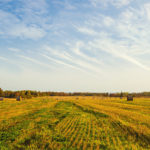
Farm subsidies were the target of much criticism at the Johannesburg Summit on Sustainable Development. Arguments first expressed by the World Bank and, amazingly, the NGO community were echoed by Jean Chrétien in an address to the Summit. The line of criticism is that subsidies in the north, especially in Europe, Japan and the United States, stunt growth in the developing world by flooding international markets with underpriced goods, thereby undercutting efforts by farmers in the south to sell their own produce. And that these subsidies, which regularly exceed US$300 billion a year, not only stymie export opportunities, but also often result in the importation of foodstuffs into countries whose economies are largely based on agriculture.
Undoubtedly, there is merit in these claims. Export subsidies in particular, which governments provide to offload surplus output at below market costs, have a devastating impact on farmers in the developing world who find themselves unable to compete even within their home markets. Given the attention accorded to this issue by the influential 1987 World Commission on Environment and Development, it is no surprise and highly appropriate that export subsidies have been the first to go in agricultural policy reforms undertaken by signatories to the 1994 WTO Agreement on Agriculture (AOA).
That being said, would the elimination of remaining subsidies, such as the price supports long used by the Europeans and recently extended under the $190 billion US farm bill, necessarily enable increased agricultural exports to the north and thereby solve the problems of development among the world’s poorest countries?
By a similar line of reasoning, would their removal provide relief for beleaguered Canadian producers who lose an estimated $1.3 billion per year as a result of foreign support programs? Are farm subsidies truly the cause of so much suffering?
On the issue of northern subsidy programs and their implications for development in the south, it should first be recognized that market access is often a separate issue from the provision of subsidies. For instance, even if subsidies were cut, access to markets may still be limited by existing marketing channels, cultural norms, food safety standards, or, most blatantly, by import duties. These duties affect 21 product markets in Canada and potentially could affect a further 150 if market circumstances should unduly harm domestic producers. The same holds true for most other rich nations.
A study published recently by the OECD identified no significant increase in market access among its member countries since the signing of the AOA. Indeed, to date it appears that northern farmers have gained the upper hand in accessing new markets under trade liberalization. The UN’s Food and Agriculture Organization reports that the growth of agricultural imports in the developing world has outpaced that of exports since 1994.
If unqualified access to northern markets can be achieved, opportunities for enrichment may be realized for competitive producers in the developing world. However, access alone cannot be expected to pull countries out of poverty. Pursuing economic development based on the export of a limited number of unprocessed cash crops is never a safe bet, and a good example is the current crisis afflicting the world’s coffee-producing regions. Not only are such commodities prone to wild price fluctuations, but over time they tend to deflate in value relative to manufactured goods. In the absence of value-added initiatives, these declining terms of trade can severely limit long-term wealth generation.
At the level of the individual peasant farmer, wealth generation is further hindered by limited access to land, capital and technology. Governments in the south might be in a position to address these limitations were it not for the profound burden posed by their accumulated foreign debts. Given these complex and persistent problems, it is understandable that Prime Minster Chrétien has identified an easier target, our competitors’ farm subsidies, as the primary impediment to poverty alleviation in the developing world. Certainly he appreciates that this goal will require a combination of efforts, not the least of which is more effective and generous foreign aid. On this count, Canada’s record over the past decade has been less than impressive. Delivery mechanisms may be better today, but our total Official Development Assistance (ODA) has declined to just 0.25 percent of national GNP as of 2000-01, compared with 0.49 percent in 1991- 92.
A further limitation of pursuing development based on cash crop exports is that it not only fails to address the persistent problem of food insecurity in many developing regions but often adds to it. Generally speaking, where cash crops such as coffee replace food crops such as cassava, local food supplies become less reliable. This is especially troubling where farming of food crops on prime agricultural lands is displaced by cash crop production for foreign markets, thereby relegating subsistence production to marginal lands.
This common occurrence is usually the untold story behind « natural » disasters such as the Honduran landslides of 1998 brought on by Hurricane Mitch. In that case, the greatest devastation occurred in upland regions where peasant farmers overworked the steep and less fertile slopes producing foodstuffs for local markets and home consumption. Clearly, the elimination of northern farm support programs will do nothing to prevent such events, let alone achieve food security in the southern hemisphere.
Turning to the home front, to what degree are these subsidies responsible for the current crisis in key sectors of Canadian agriculture? Certainly Canadian wheat producers have much to complain about given that they receive support equal to just $0.40 a bushel, while their counterparts in the United States and Europe receive $2.50 and $6.00 a bushel, respectively. While the elimination of all subsidies might improve Canadian export opportunities, this one change in policy cannot be expected to eradicate the long-term problems of overproduction and low prices. Over time, productivity gains have been achieved irrespective of government intervention, and this has largely contributed to declining prices. Looking back at Canadian wheat production and prices over the last century, one can’t help but conclude that farmers have been victims of their own success.
Is this a fair conclusion? Not entirely. Given the competitive nature of the industry, few if any individual farmers have the ability to influence prices. In the export-oriented sectors in particular, farmers have come to accept the need to forever increase production in order to combat the infamous cost-price squeeze: their production costs tend to rise faster than the prices they receive for their outputs. The results of the 2001 census are particularly telling in this regard. In 1995, total operating expenses equalled 83 percent of total revenues; by 2000, they had climbed to 87 percent. At the extreme end, cattle farms spend 94 cents for every dollar in sales. Most significantly, the census shows us that the largest farms had the best ratio of expenses to sales, and the smallest farms had the worst. That helps to explain why, year after year since 1942, Canadian farms have become fewer in number and larger in size. Expansion is required for success, yet this expansion adds to depreciating prices. Hardcore free-marketers argue that, in the absence of government interference, a state of equilibrium will eventually be achieved in the marketplace and the industry, but this belies the historical realities of commercial agriculture.
To make matters worse, organizations like the National Farmers Union have long argued that the cost-price squeeze is compounded by an imbalance of market power between farmers and the businesses that sell them their inputs and purchase their outputs, which inflates the cost of the former and suppresses the price of the latter. This is not a radical opinion. The 1969 Canadian Royal Commission on Farm Machinery reached a similar verdict with respect to the cost of tractors and replacement parts in the Canadian marketplace. To draw on more contemporary evidence, it is interesting to note, as per Statistics Canada data, between May 1996 and May 1999 the price of wheat in Canada declined by nearly 50 percent, while the price of wheat flour increased by 1 percent. Without competition among processors equal to that among farmers, it is understandable that, over the years, farmers have given up an ever-greater share of the final retail price of food.
In addition to these market troubles, farmers have to deal with numerous risks of production such as persistent droughts or livestock diseases. Some analysts suggest that subsidies that buffer these risks only hinder adaptation efforts, and there is certainly some truth to this. However, there may also be limits to such individual efforts, and in many cases public support may be necessary to cover initial losses and kick-start adaptation. This is one of the great lessons from the dust bowl days on the prairies. It was support from government that first enabled farmers to plant trees and thereby secure the blowing topsoil. This event also taught us that the Canadian public has a vested interest in the well-being of agricultural lands and can play a financial part in supporting good stewardship, especially where farmers expend private funds to produce largely public environmental benefits.
For these and other reasons, certain farm subsidies can play a useful role in a sustainable food production system. Indeed, Canadian agriculture currently benefits from two commendable examples of subsidization. The Net Income Stabilization Account (NISA) program, which operates much like a generous RRSP, has the potential, once individual accounts become better endowed, to even out farm incomes over time and improve financial security. Given its negligible impact on production decisions, the NISA program also meets current (and most proposed) WTO rules.
The second program worthy of attention is supply management. In terms of offering price and income stability, as well as fair consumer prices, no farm program has worked better. Canadian dairy, poultry and egg producers are protected by import tariffs that effectively eliminate foreign competitors. With this protection in place, producers are able to divide up the marketplace and ensure that supply never outstrips demand. Such a system may not be consistent with the spirit of the WTO and certainly flies in the face of Prime Minister Chrétien’s recent statements, yet it may provide the best model for the developing world to follow.








